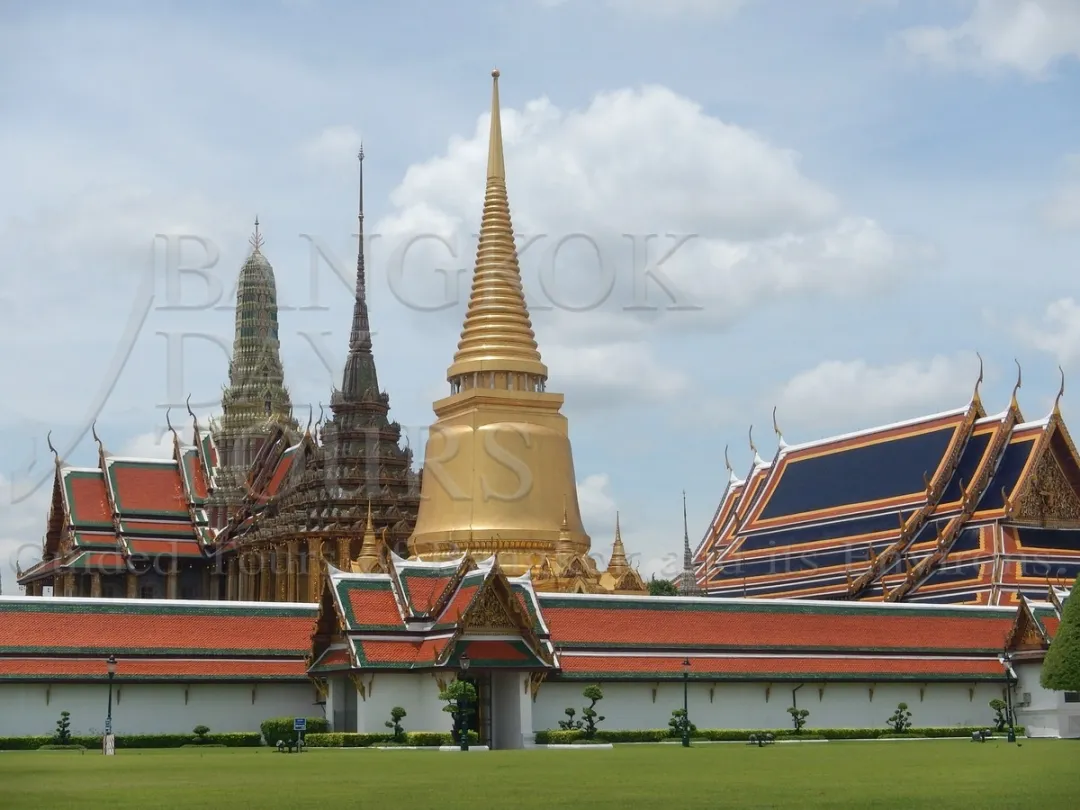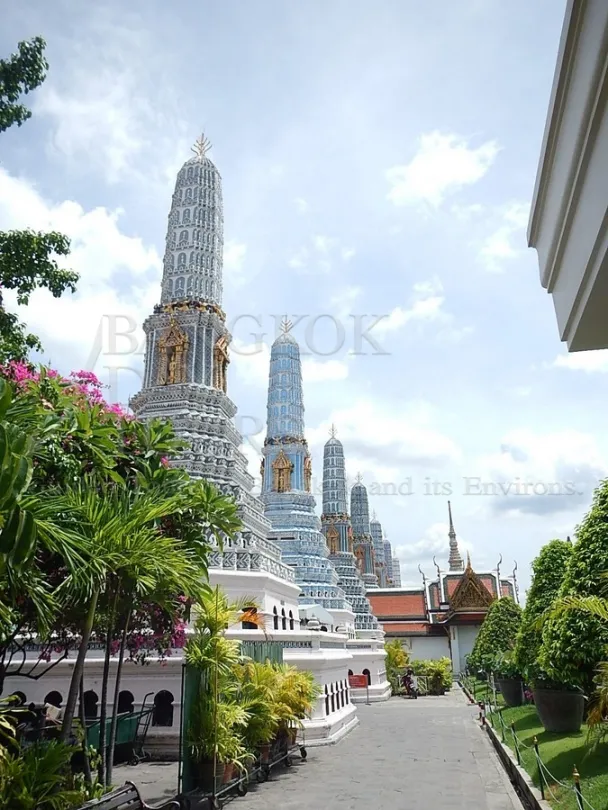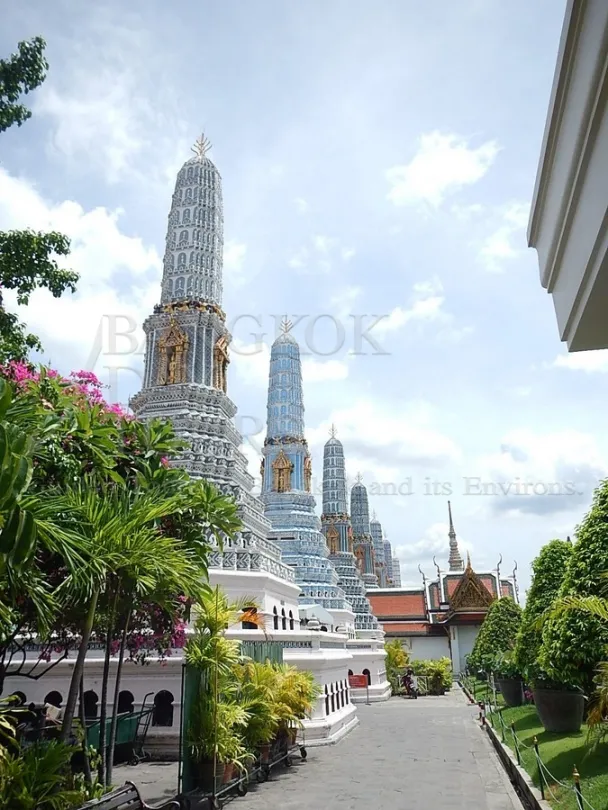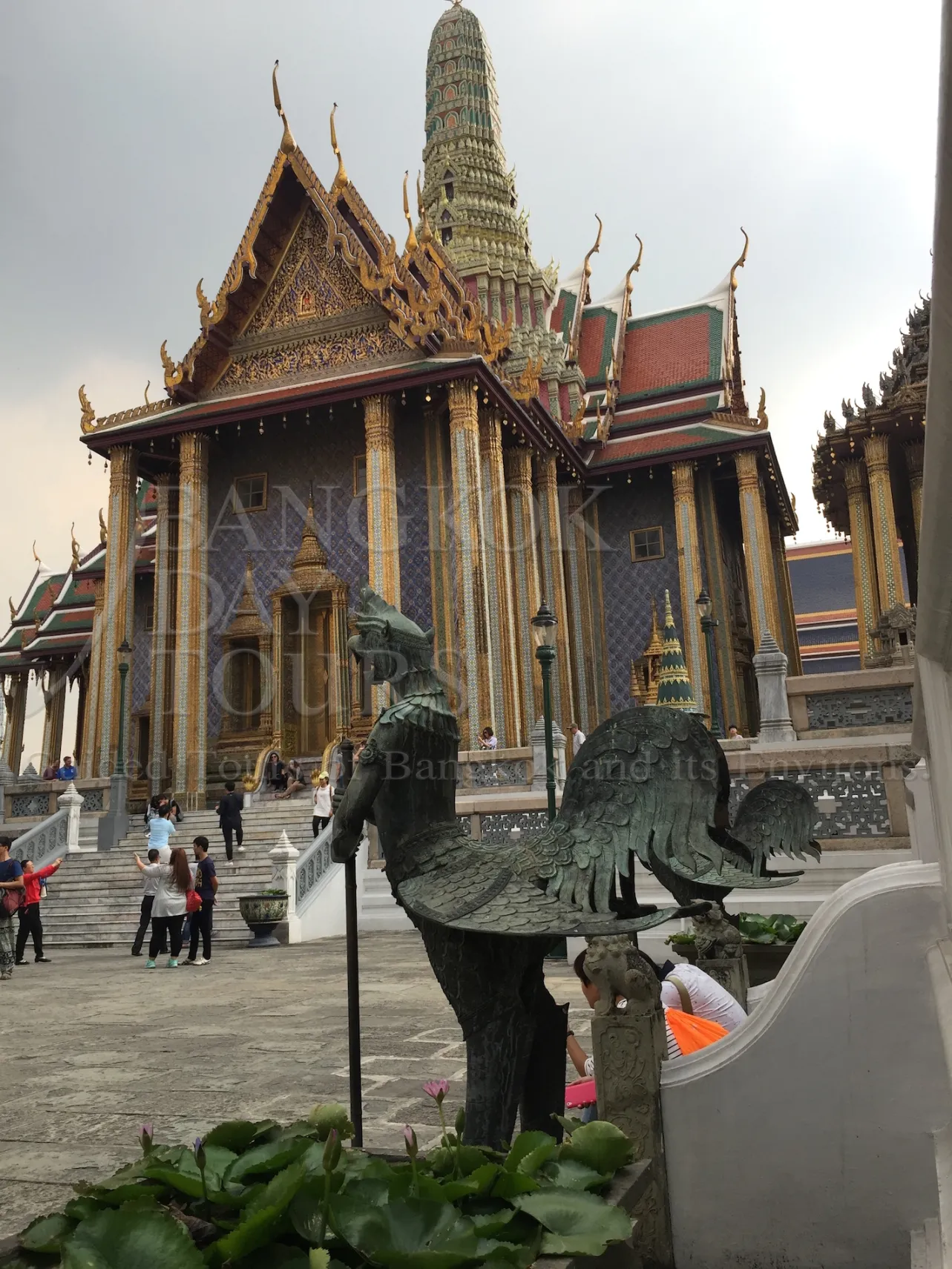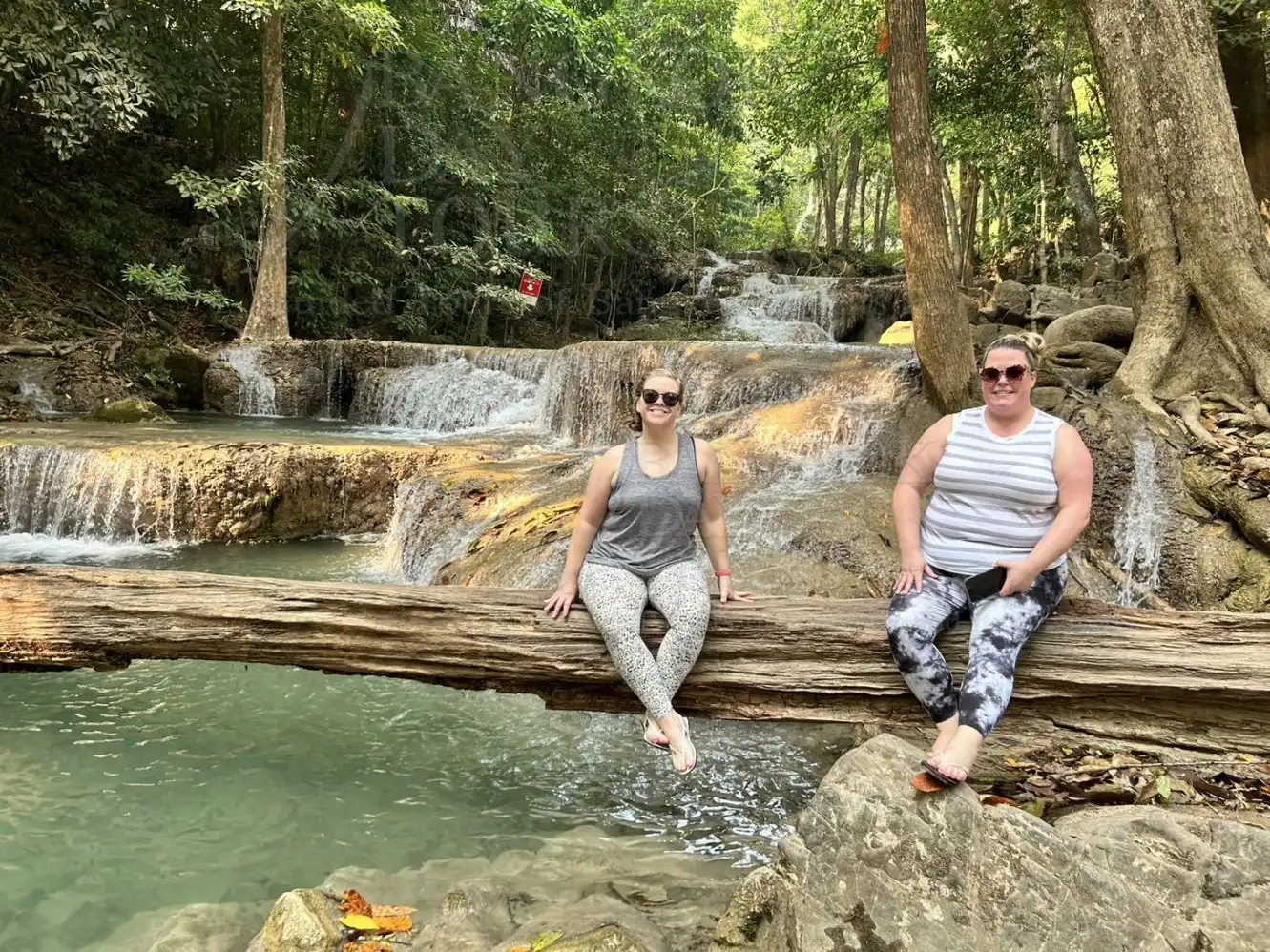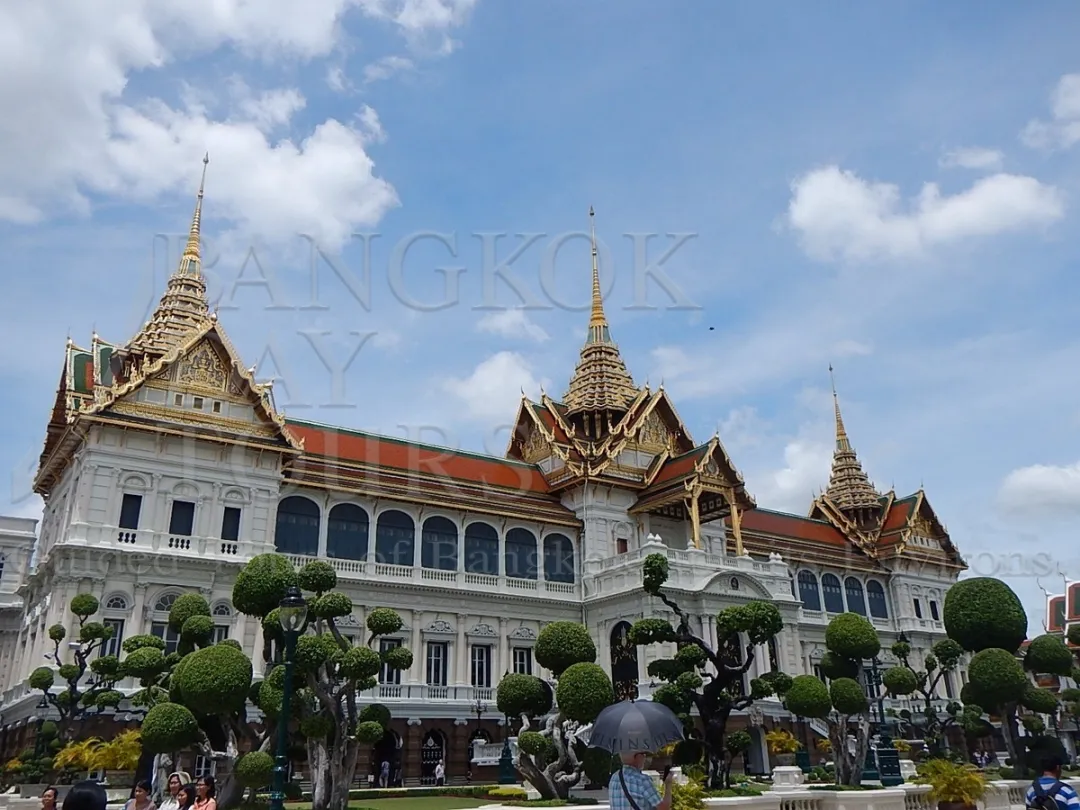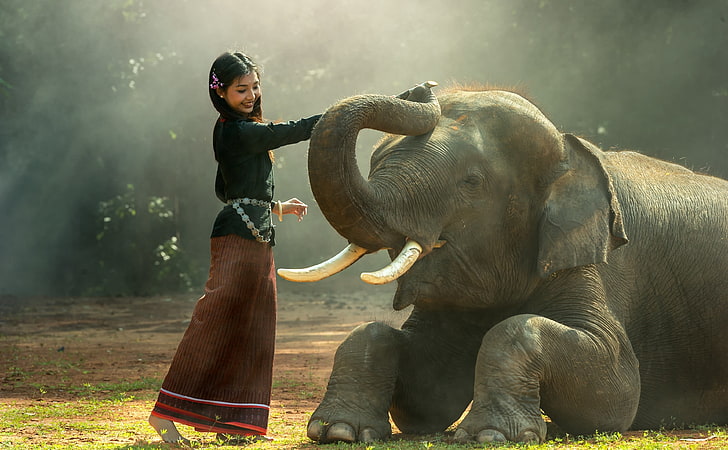
Attractions information
Wat Saket Golden Mount
The Golden Mount or 'Phu Khao Thong' is part of the Wat Saket temple located just outside the old royal city precincts, next to the Pom Mahakhan fort.
There are about 300 steps in all & it's not a strenuous climb, as the slope is quite gentle and there are numerous spots to stop and see something.
The Golden Mount has a somewhat unusual history in that it was expanded by King Rama III, who wanted to build a large chedi on the site to mark the entrance to the city. However, the soft marshy ground could not support such a large structure and it collapsed before it was completed.
During the late-18th century the temple served as the capital's crematorium. During the following 100 years, the temple became the dumping ground for some 60,000 plague victims who were not allowed to be buried within the royal city precincts.
From the ground, a wide stairway spirals up and around the sides of the mount and the short steps ensure you don't expend too much energy.
The best time to visit the temple is during the cool season from late November to January, when not only is the temperature much cooler, but the frangipani trees around the base are in bloom, giving off their wonderful jasmine-like smell.
In the first week of November, Wat Saket hosts an annual temple fair with lots of lanterns.

Attractions information
Wat Pho Reclining Buddha Temple
Wat Pho, located next to the Grand Palace, is the one of the largest & oldest temples in Bangkok and is home to more than one thousand Buddha images. The most impressive of which is the huge Reclining Buddha measuring 46 metres long & 15 metres high with mother of pearl inlaid in its eyes & feet.
Wat Phra Chetuphon Vimolmangklararm Rajwaramahaviharn is commonly known as Wat Pho and the temple complex consists of two walled compounds bisected by Soi Chetuphon running east-west.
The northern walled compound is where the Reclining Buddha and famed massage school for the blind are found. If you go for a massage make sure you ask for 'soft'!
The southern walled compound, Tukgawee, is a working Buddhist monastery with monks in residence and a school.
The principal Buddha image is "Phra Buddha Deva Patimakorn" in a gesture of seated Buddha on a three tiered pedestal called Phra Pang Smardhi (Lord Buddha in the posture of concentration), and some ashes of King Rama I are kept under the pedestal.
Made as part of Rama III's restoration, the Reclining Buddha is decorated with gold plating on his body and mother of pearl on his eyes and the soles of his feet. Each foot is 3 metres high & 5 metres long and displays 108 auspicious signs portraying natural scenes of both Indian and Chinese influences.
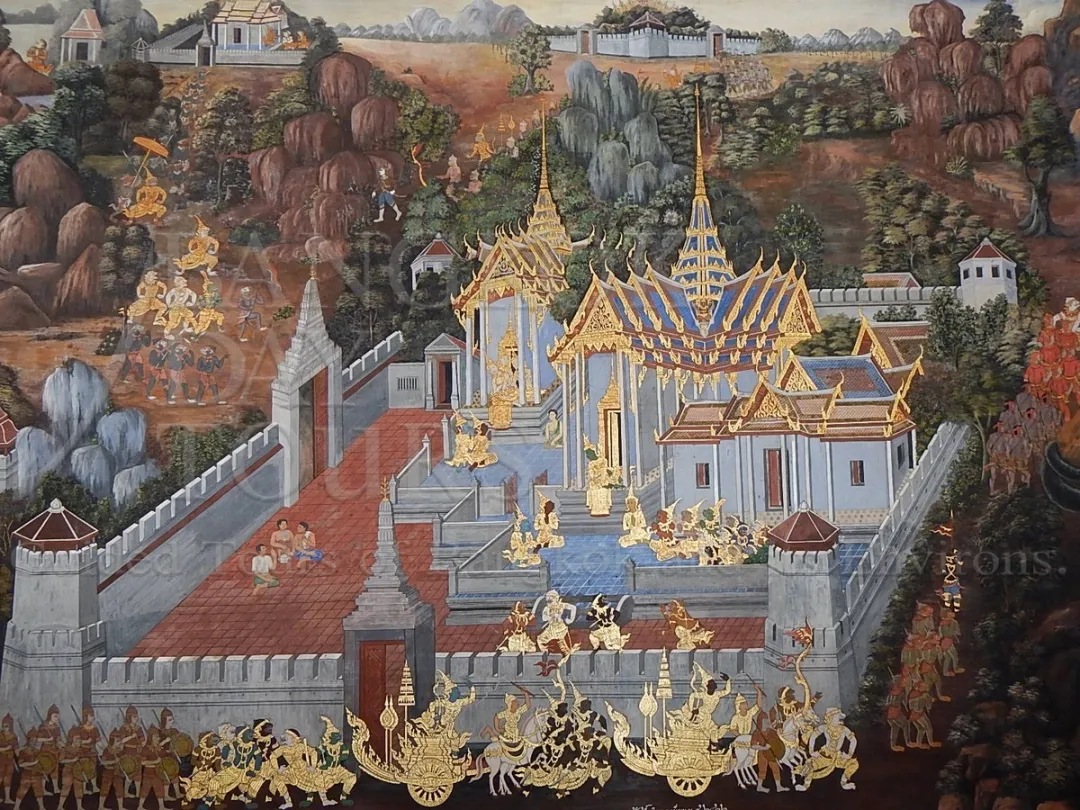
Attractions information
Grand Palace Bangkok
The Grand Palace is the most spectacular place in Bangkok, so if you only see one thing whilst in the city, this is the place to see.Thai people respectfully refer to it as Phra Borommaharatchawang. It served as the official residence of the King of Thailand from the 18th -20th century.
The Grand Palace complex, construction of which began in 1782 during the reign of King Rama I, sits on the east bank of the Chao Phraya River and is surrounded by a defensive wall 1,900 metres in length, which encloses an area of 218,400 square metres. Within its walls, in times past, were the Thai war ministry, state departments, and even the mint.
Within the palace complex are several impressive buildings including Wat Phra Kaeo or the Temple of the Emerald Buddha, which contains the revered Emerald Buddha that dates back to the 14th century.
Thai Kings stopped living in the palace in the middle of the twentieth century, but the royal residence is still used by visiting dignitaries.
Important Information
A strict dress code applies here. The Grand Palace and The Temple of the Emerald Buddha is Thailand's most sacred site. Visitors must be properly dressed before being allowed entry to the temple. Men must wear long pants and shirts with sleeves. No tank tops or singlets. Women must be similarly modestly dressed. No see-through clothes or bare shoulders. No shorts or tights. Proper shoes must be worn. No flip flops.

Attractions information
Lunch in a Thai Restaurant
Thai food has a range of tastes to suit all pallets so please don't make the mistake of thinking that all Thai food is spicy. Some dishes are very spicy but there are many which are not spicy at all. Rather, they are a wonderful combination of sweet and sour.
Thai dishes are normally shared by all.
Thai Cuisine is well-known for being hot and spicy and for its balance of the five fundamental flavors in the overall meal - hot (spicy), sour, sweet, salty, and bitter.
Thai food has four regional cuisines corresponding to the four main regions of the country: Northern, Northeastern (or Isan), Central, and Southern, each cuisine featuring locally grown food.
Southern curries, for example, tend to contain coconut milk and fresh turmeric, while northeastern dishes often include lime juice. The cuisine of Isan is heavily influenced by Laos.
Many popular dishes eaten in Thailand were originally Chinese dishes which were introduced to Thailand mainly by Teochew people who make up the majority of the Thai Chinese. Such dishes include Jok, Kway teow Rad Na, Khao Kha Moo and Khao Mun Gai.
Thai food is known for its enthusiastic use of fresh rather than dried herbs and spices as well as fish sauce.
Attractions information
Jim Thompson House
Jim Thompson was an American who settled in Thailand after the end of the Second World War. He devoted himself to revitalizing a cottage industry of hand-woven silk, which was dying out.
His house was built from parts of six antique Thai houses which had been dismantled and brought to Bangkok.
Jim Thompson located a group of Muslim weavers in the Bangkok neighborhood of Bangkrua and provided hitherto unavailable color-fast dyes, standardized looms, and technical assistance to those interested in weaving on a piece-work basis.
His endeavour showed a profit from its first year of operation. Thompson's determination to keep his company cottage-based was significant for the women who made up the bulk of his work force.
In 1958 he began what was to be the pinnacle of his architectural achievement, a new home to showcase his art collection. Formed from parts of six antique Thai houses, his home sits on a canal across from Bangkrua, where his weavers were then located. Most of the 19th century houses were dismantled and moved from Ayutthaya, but the largest - a weaver's house, now the living room - came from Bangkrua.
During Easter 1967, Jim Thompson disappeared while on holiday in the Cameron Highlands of Malaysia. An extensive and extended search failed to reveal any clues about his disappearance.
Bangkok Historic Places Tour (Code:1001)
Pick a day and people
THB 9,600.00
THB 10,800.00
THB 13,200.00
THB 16,700.00
THB 18,700.00
THB 20,900.00
THB 23,100.00
THB 25,600.00
THB 27,900.00
THB 34,700.00
THB 38,200.00
THB 38,200.00
This tour is not designed for cruise ship passengers. Exclusive cruise ship tours are available from Klong Toey Port and Laem Chabang Port.
Let's start at the gateway to the original city, the Golden Mount or Wat Saket. Then to Thailand's first university at Wat Pho where you'll see the huge Reclining Buddha. We must include the Grand Palace & Wat Phra Kaew. It was home to 7 Thai kings. Finally, a look at Jim Thompson's beautiful house.
Do you want your tailor-made tour?
A tailor-made tour is the best kind of independent travel itinerary, designed and arranged just for you and your needs.
All events and activities are part of your very personal, privately guided tour.
Just ask us and we will be happy to make your tour an unforgettable experience. We have been doing this for 25 years and the quality of tailor made tours has never changed.
Why is a private tour a better choice?
With a private tour, you have the freedom to choose what you want to do and when you want to do it. There is much more room for flexibility and changes to your itinerary at every step of the way because you don't have to consider the needs of other travelers. The flexibility and freedom to make the most of your time is the reason why so many people choose to take a private tour rather than a group tour.Private Tours vs Join Tours:
Bangkok Day Tours does not run join tours. All our tours are private tours, meaning that the vehicle is for the exclusive use of your group throughout the duration of your tour. This allows you to set your own pace and to move along when you have seen enough. No waiting for the stragglers! The only exception to the ANZAC Day Tours which are run on a join basis in April each year.Tour Programme
08:00 - Pick up from hotel
We'll pick you up from your hotel. Please wait in the lobby.
08:45 - Wat Saket Golden Mount
Wat Saket is one of the oldest temples in Bangkok. It is famous for its towering height. It is also famous for the Golden Mount Chedi. Read More >
09:45 - Wat Pho Reclining Buddha
Wat Pho is considered Thailand's first university. It houses the famous Reclining Buddha.Read More >
10:30 - Grand Palace Wat Phra Kaew
The Grand Palace incorporates Wat Phra Kaew, or the Temple of the Emerald Buddha, which is Thailand's most revered temple.Read More >
12:30 - Lunch in Thai Restaurant
Lunch will be in a Thai restaurant beside the Chao Phraya River.Read More >
14:00 - Jim Thompson's House
The Jim Thompson House is a museum in central Bangkok, Thailand, housing the art collection of American businessman and architect James Harrison Wilson. Take a guided tour through one of the most authentic traditional Thai houses which has been beautifully preserved. Read More >
15:30 - Return to your hotel
Drop off back at your hotel or elsewhere if you want to go shopping.
Important Information
A strict dress code applies here. The Grand Palace with The Temple of the Emerald Buddha is Thailand’s most sacred site. Visitors must be properly dressed before being allowed entry to the temple. Men must wear long pants and shirts with sleeves. No tank tops or singlets. Women must be similarly modestly dressed. No see-through clothes or bare shoulders. No shorts or tights. Proper shoes must be worn. No flip flops.















